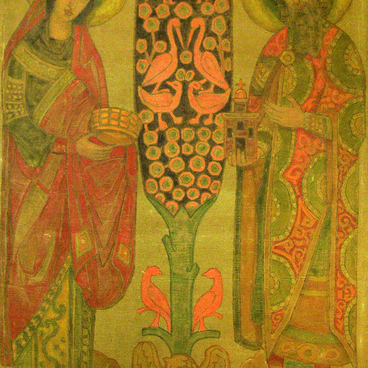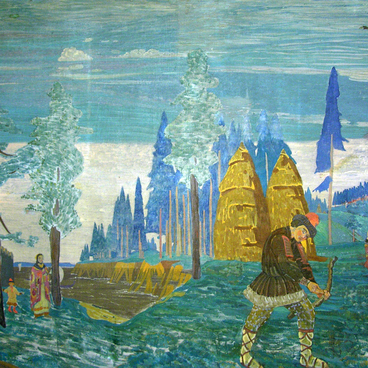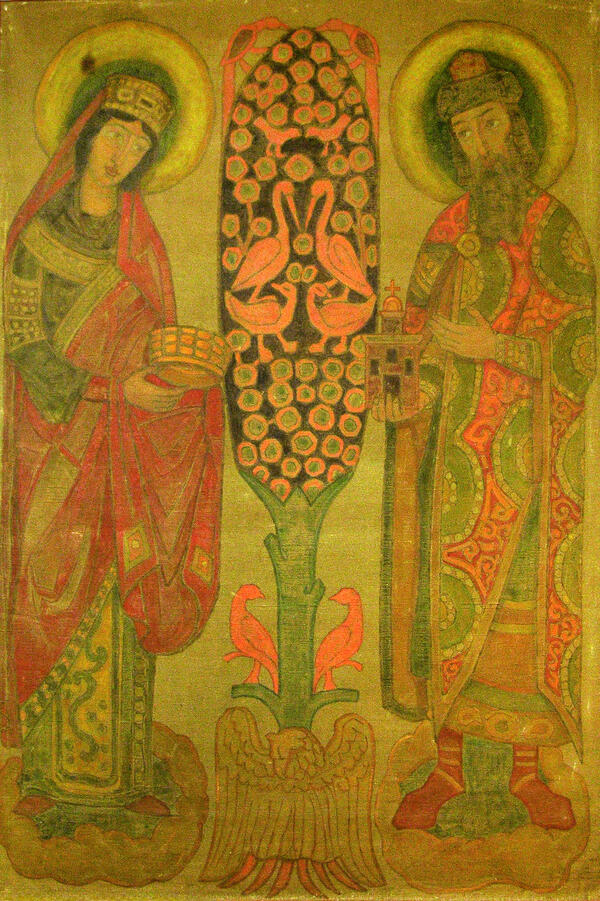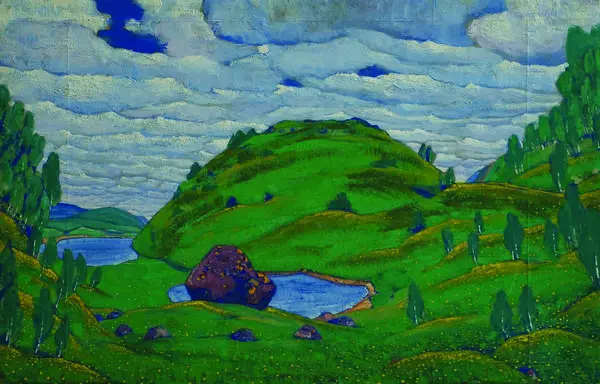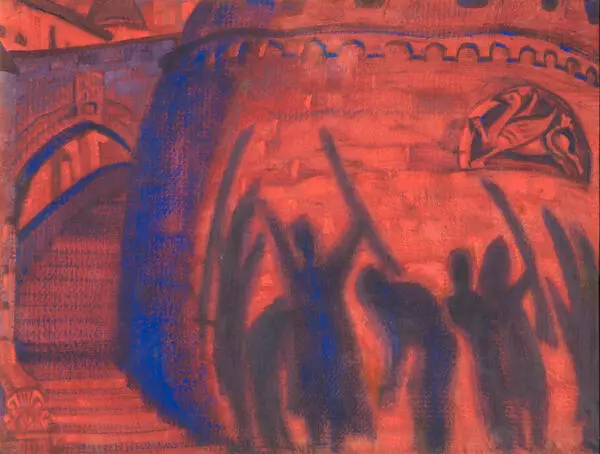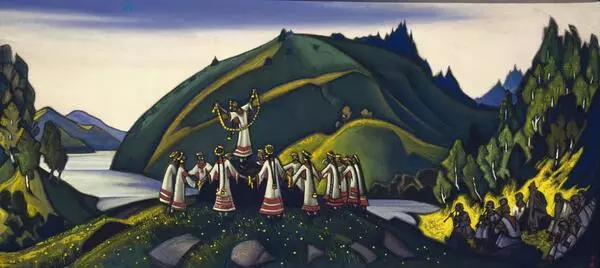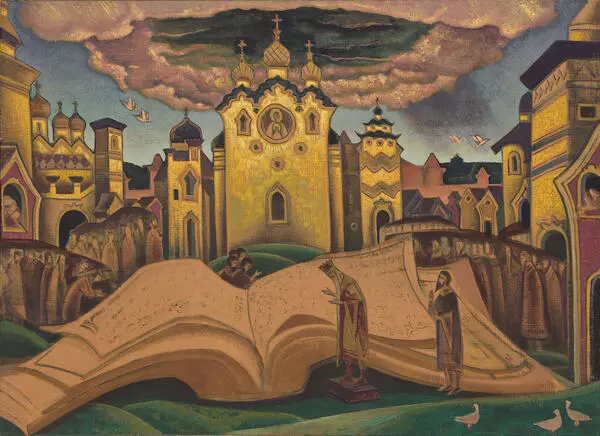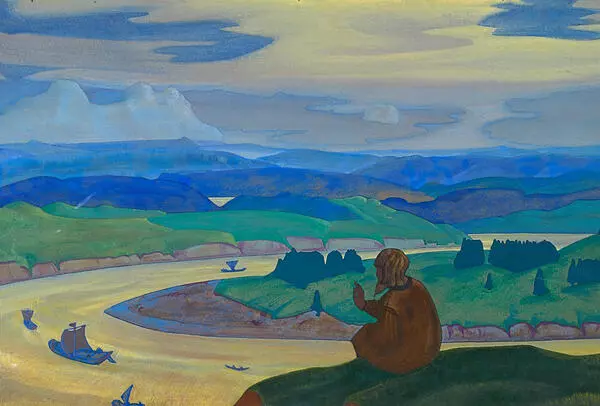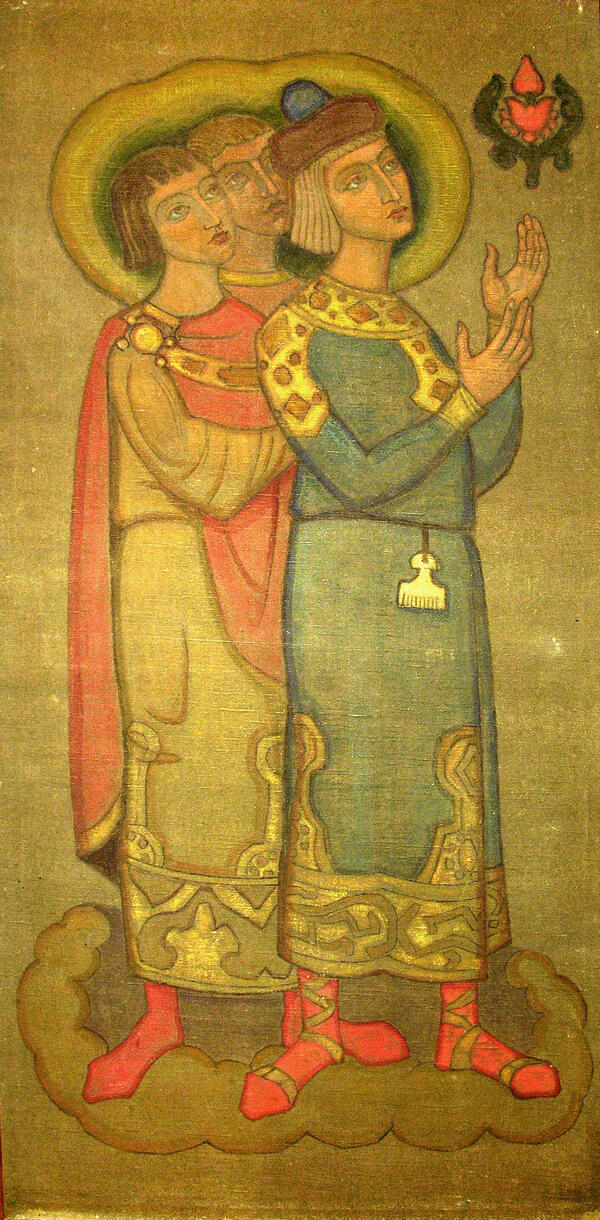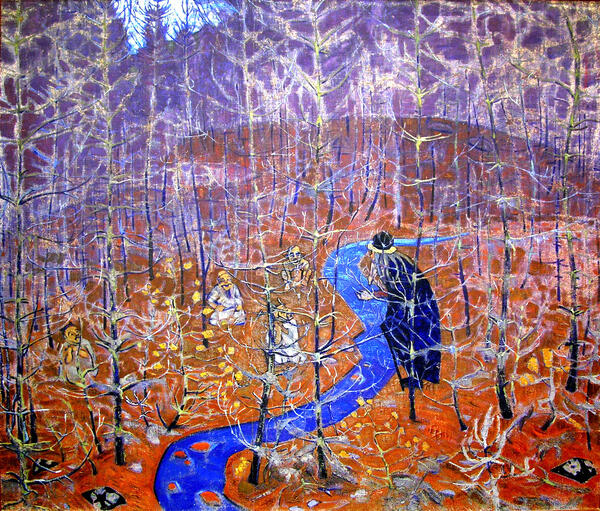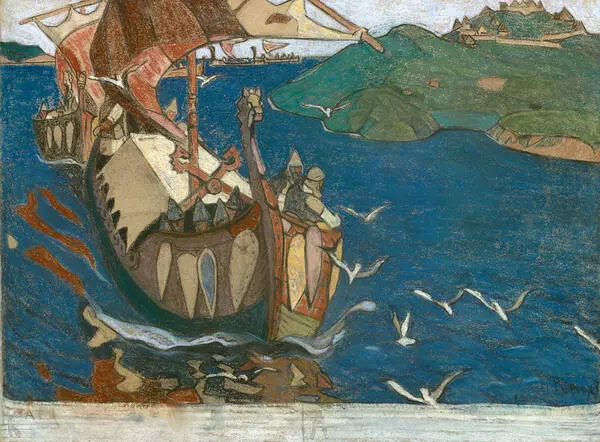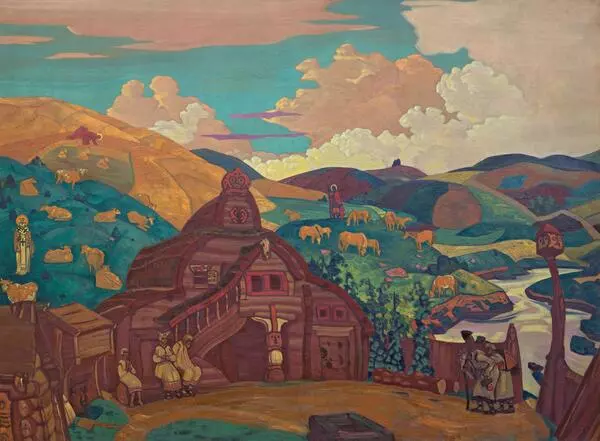The multifaceted work of Nicholas Konstantinovich Roerich organically combined philosophy, painting, and literature. His works are characterized by the boundless harmony, beauty, love and wisdom, connecting the culture of the West and the East. At the same time, the origins of his work were connected with Russia, its history and cultural traditions.
In the 1904 painting “Old Pskov” in a generalized form, without stopping at details, Nicholas Roerich recreated the very spirit of the harsh medieval time. For the painting, the artist chose the combination of muted green and orange-red tones favored by Pskov icon painters. The master depicted the city as a stronghold of the Russian land, whose mighty fortress walls repeatedly repelled the onslaught of the enemy. Numerous ships off the coast serve as a reminder that the city was a major trading center.
The canvas is permeated with a vague sense of anxiety, connected with the historical fate of the city. Its location on the western borders of Ancient Russia led Pskov to be one of the first to take on the blows of enemies.
The artist depicted the
deserted shore at the city gates, the fortress walls and towers darkened by
time, the gloomy sky pierced by flashes of lightning. Plunging into the distant
past, Roerich sought answers to the questions posed by his time. Everything had
already happened. The people endured difficult periods, relying on faith in a
just cause and higher spiritual principles.

